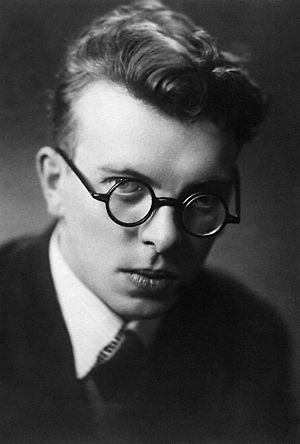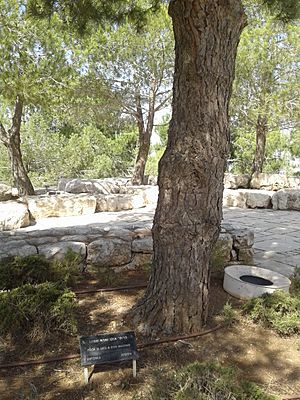Uku Masing facts for kids
Quick facts for kids
Uku Masing
|
|
|---|---|
 |
|
| Born |
Hugo Albert Masing
11 August 1909 Lipa, Raikküla Parish, Kreis Harrien, Governorate of Estonia, Russian Empire
|
| Died | 25 April 1985 (aged 75) Tartu, Estonia
|
| Occupation | Philosopher, theologian, poet, writer, folklorist, linguist |
| Years active | 1934–1985 |
| Spouse(s) |
Eha Gnadenteich
(m. 1939) |
Uku Masing (born Hugo Albert Masing, August 11, 1909 – April 25, 1985) was an Estonian philosopher. He was a very important person in Estonian religious thinking. Masing also wrote many poems, mostly about religious topics.
Masing wrote one novel, Rapanui vabastamine ehk Kajakad jumalate kalmistul (which means Liberation of Rapa Nui, or Seagulls at the Cemetery of Gods). He wrote it in the late 1930s, but it was published after he passed away in 1989.
As a folklorist, he was a great researcher of fairy tales. He even helped with the international Encyclopedia of the Folktale. He received the Righteous Among the Nations award from Yad Vashem and the Israeli Supreme Court. This award was for helping a Jew in Estonia escape danger during The Holocaust from 1941 until the end of the war. His brave actions put him in great danger.
Early Life and Learning
Masing was born in Lipa village, Raikküla Parish, Rapla County, on August 11, 1909. His birth name was Hugo Albert Masing. His parents were Ado and Anna Masing. He had a younger sister named Agnes, born in 1911.
Uku Masing was very good at languages. By the time he finished high school, he could speak four languages. By the end of his life, he knew around 65 languages and could translate from 20 of them! He was known for translating directly from original Hebrew, European, and Asian languages into Estonian.
He started studying theology at the University of Tartu in 1926. While studying and after graduating, he published many poems, translations, and essays. His most famous work was published in 1935. It was a collection of poems called Promontories into the Gulf of Rains.
Masing was part of an important group of Estonian poets called Arbujad ("Soothsayers"). This group was formed in 1938 by a literary expert named Ants Oras. Other famous poets in this group included Heiti Talvik, Betti Alver, and August Sang.
Helping Others During Wartime
Uku Masing taught at the University of Tartu in Estonia. He was known as a brilliant teacher of theology and ancient languages. When Germany took over Estonia during World War II, he stopped teaching. Instead, he worked to protect Jewish cultural and religious items.
Masing knew a Jewish folklorist named Isidor Levin from his teaching days. He decided to hide Levin from the Germans, who were persecuting Jewish people. Masing and his wife, Eha, bravely helped Levin. They gave him food, a safe place to stay, clothes, and even fake documents. They also courageously protected him from the Gestapo, the German secret police.
Because of these brave actions, Masing and his wife were honored as Righteous Among the Nations. This special award is given to non-Jewish people who risked their lives to save Jews during the Holocaust. After the war, Masing also helped investigate terrible crimes committed by the Nazis, especially at the Klooga concentration camp.
Images for kids




